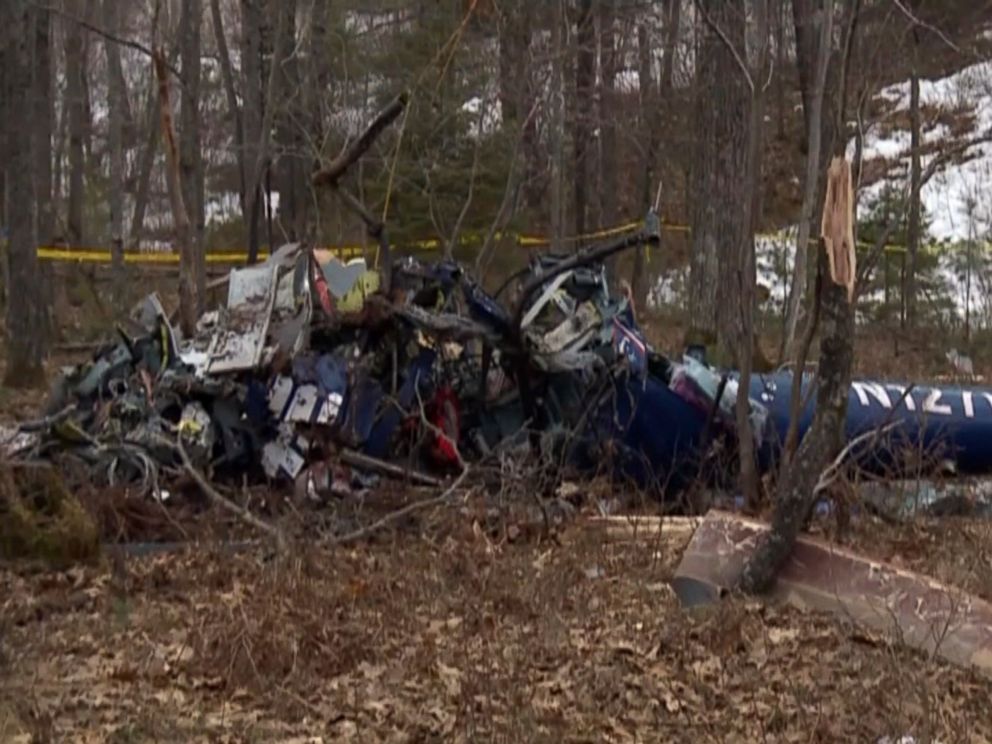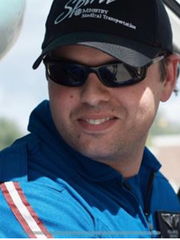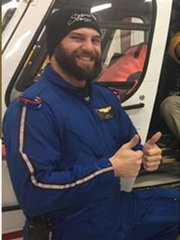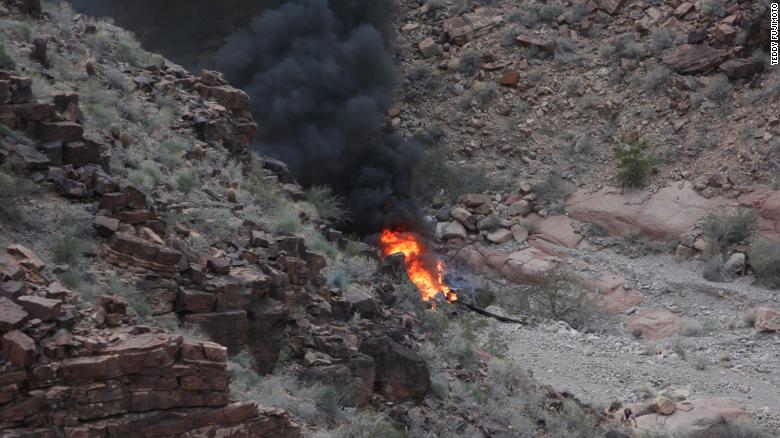 |
Is your program flying IFR, or is it VFR only? Single-pilot or dual-pilot? The advent of inexpensive and lightweight automation has enabled another concept, but the author doesn't think we realizing the full value of our investment
SINGLE-PILOT/AUTOPILOT. |
A prerequisite in the authorization of single-pilot programs to operate IFR, under actual IMC, is that the aircraft be equipped with a functioning Autopilot. During instrument flight, if the Autopilot is utilized, the pilot then becomes the “pilot monitoring” or PM, while the Pilot flying (PF), is actually the Autopilot!
The human pilot’s role is to correctly program the autopilot, monitor to make sure it is functioning correctly in its navigation and “coupling” functions, and be ready to take over if the Autopilot
malfunctions in a significant way. At a certain point of flight the pilot must take over, but for the majority, it is the autopilot that is in control of staying on course and on altitude.
There have been a chronic and disturbing number of HAA and other civil helicopter accidents which
could have most likely been prevented by smart use of the installed Autopilot equipment. An analysis of the probable causes of many of these accidents and close calls in the civil helicopter world show that the “mishap aircraft” were equipped with perfectly functioning and available Autopilots. (Referred subsequently in this article as APs). A simple push of two buttons, depending on the type of AP, could have stabilized the aircraft, established a safe climb and heading away from the hazards on the ground, and smoothly transitioned the flight to a safe cruise altitude and setup for an instrument approach (or flight to better weather and VFR recovery). BUT THE AUTOPILOT WAS NOT USED.
The aircraft was hand flown, unnecessarily and with adverse consequences. For various reasons due to aircraft certification, pilot training, and an aviation culture that emphasizes manual flying, the AP is not being utilized to the extent it should be.
The reason the AP modes are not being used when they should are numerous and varied, but can be
summarized by a lack of clear guidance on when and how to use an AP for pilots who are not IFR current or qualified, or ar in aircraft that are equipped with an AP, but for various regulatory reasons, are not
certified for IFR flight. There are also single pilot IFR programs in which both the pilot and aircraft are qualified and certified, but due to an “old-school” mindset, the AP is used only during actual IMC, and only sporadically during other phases of flight.
USE OF AP IN ROUTINE VFR FLIGHT AND DURING IN-FLIGHT EMERGENCIES
For routine VFR flight, the benefits of using the AP for many phases of flight are that it reduces pilot
workload, especially single pilot, and allows the pilot additional task management resources tomanage the overall flight. This includes scanning outside to enhance situational awareness regarding
weather, air traffic, birds or other hazards to flight. Ironically to some, the momentary ”heads down”
that might be necessary to engage the AP results in a much greater level of “heads up” for the rest of
the flight.
In the dynamic and changing flight environment in which helicopters operate, there are numerous
situations or hazards in which routine use of AP could be of immense benefit. A pilot incapacitation
event, especially with a lone pilot at the controls, could be fatal due to the subsequent loss of control.
Pilot incapacitation can result from a medical event, or from a bird or other object coming through the windscreen and striking the pilot. More recent flight hazards include laser strikes and an increase in the number of drones in the vicinity of helicopter operations. While strategies to mitigate these risks depend on the specific hazard, protective equipment, type of aircraft, and pilot training, one universal truth is that the AP is basically invulnerable to many of the human frailties that can take a pilot out of commission in his or her ability to operate the helicopter. It cannot be temporarily blinded, suffer from nausea, tunnel vision or vertigo, or panic when an extreme event occurs. Allowing the AP to operate the aircraft in routine flight, or activating it if possible ASAP after certain emergencies, could be just what is needed to stabilize the emergency situation and allow the pilot to recover or resume control with the assistance of the AP.
For flights in marginal VFR conditions, use of the Autopilot is even more important. Autopilots can help pilots fly safely when they lose visibility during inadvertent entry in instrument meteorological
conditions (IIMC) when their helicopter flies into clouds and/or fog. With the loss of visual flight
references, VFR pilots can lose an accurate sense of their location, altitude, and angle with respect to
the ground and horizon, thus they are flying “blind.”
Flights into IIMC are completely non-dramatic if the pilot understands the basics of the AP system and use, programs it properly, and get it activated as soon as possible after takeoff. Many recent HAA
accidents have been a result of pilots, usually on deck at a landing zone, taking off and encountering
unexpected low ceilings and then attempting to manually fly the aircraft in IMC. This is a recipe for
spatial disorientation and subsequent loss of control. For AP equipped aircraft, the formula for survival under similar circumstances is to have a plan in which the takeoff brief includes pre-selecting your altitude in the AP, and a heading which clears you of obstacles ASAP and is preferably into the wind. (This allows the pitot-static instruments to come up to speed expeditiously and allow instrument flight and AP use).
As soon as possible after the aircraft reaches Vmini, (minimum AP activation airspeed) activate the heading select and a vertical climb mode. Climb using max continuous power and accelerate to best climb airspeed. Your strategy will have the AP flying the aircraft, and if you experience spatial
disorientation it will be relatively benign because you are not flying the aircraft; the autopilot is.
Yes, you need to be vigilantly monitoring the AP’s performance, and ready to take over manually if necessary, but the primary focus is planning, programming, monitoring, and letting the automation complete the task of getting you up to a safe altitude and on a safe heading. Keep it on the AP for the rest of the flight as you tune radios, contact ATC, choose and program the approach to the most appropriate recovery airport.
Pilot Incapacitation
Medical events have the potential to incapacitate a pilot temporarily, at the very least. A medical
event due to a concussion or blinding because of an object striking the pilot. More recent flight hazards include laser strikes and an increase in the number of drones in the vicinity of helicopter operations. While strategies to mitigate these risks depend on the specific hazard, protective equipment, type of aircraft, and pilot training - one universal truth is that the AP is basically invulnerable to many of the human frailties that can take a pilot out of commission in
his or her ability to operate the helicopter. It cannot be temporarily blinded, will not suffer from nausea, tunnel vision or vertigo, or never panics when an extreme event occurs. Allowing the AP to operate the aircraft in routine flight, or activating it if possible ASAP after certain emergencies, could be just what is needed to stabilize the emergency situation and allow the pilot to recover or resume control with the assistance of the AP.
For AP equipped aircraft, the formula for survival under similar circumstances is to have a plan in which the takeoff brief includes pre-selecting your altitude in the AP, and a heading which clears you of obstacles ASAP, and is preferably into the wind. (This allows the pitot -static instruments to come up to speed expeditiously and allow instrument flight and AP use). As soon as possible after the aircraft reaches Vmini, (minimum AP activation airspeed) activate the heading select and a vertical climb mode.
Climb using max continuous power and accelerate to best climb airspeed. Your strategy will have the AP flying the aircraft, and if you experience spatial disorientation it will be relatively benign because you are not flying the aircraft, the AP is. You need to be vigilantly monitoring the AP’s performance, and ready to take over manually if necessary, but the primary focus is planning, programming, monitoring, and let the automation complete the task of getting you up to a safe altitude and on a safe heading. Keep it on the AP for the rest of the flight as you tune radios, contact ATC, choose and program and approach to the most appropriate recovery airport.
TRAINING FOR INCREASED ROUTINE USE OF THE AUTOPILOT
In the airline industry, there has been an increased emphasis on scenario-based training, also known asnLOFT (Line Oriented Flight Training). The philosophy of this training, which is usually flight simulator based, can be summarized below
(Source - ICAO Circular 217 AN/132 'Human Factors Digest No 2): “LOFT scenarios may be developed from many sources, but accident reports provide a realistic and appropriate starting point. A properly conducted LOFT program can provide great insight into the internal workings of an airline's operations and training program for the following reasons:
1. If similar mistakes seem to be recurring among pilots, it may indicate a potentially serious problem as a result of incorrect procedures, conflicting or incorrect manuals, or other operational aspects.
2. It may reveal areas in aircrew training programmes which are weak or which need emphasis.
3. It may reveal problems with instrument locations, the information being presented to pilots or other difficulties with the physical layout of a particular flight deck.
4. Air carriers can use it to test and verify flight deck operational procedures.
LOFT should not be used as a method of checking the performance of individuals. Instead, it is
a validation of training programs and operational procedures. An individual or crew needing
additional training after a LOFT session should be afforded that opportunity immediately with
no stigma or recrimination.”
With this training philosophy in mind, this is how HAA and other single pilot helicopter operators
industry could change normal training and checkrides with respect to AP use:
Flight Training plan – Inadvertent IMC . -Most Inadvertent IMC training is done on a checkride, at altitude, in cruise flight VFR. Focus the training scenario instead as a simulated inadvertent IMC at a low altitude while taking off from your home airport.
Announce “inadvertent IMC” at about 100’ AGL. The drill should promote a before takeoff checklist which addresses the use of Autopilot modes and cockpit setup, the importance of an “airspeed over altitude” which gets you to Vmini quickly, and selecting the appropriate climb modes and power setting (for a two or three-axis autopilot).
Even if not set up and briefed for IFR flight, train how to quickly and efficiently identify and activate the right AP modes for the situation. Hand flying should be discouraged if the AP is available. For simulator training, the same applies. All takeoffs, even under simulated VMC, should be flown either with the AP engaged as soon as possible, or set up for immediate activation.
If the inadvertent IMC conditions are given at altitude while the pilot is flying manually, emphasize the need to activate the Autopilot. Hand-flying the aircraft under IMC, while single pilot, should be trained realistically, emphasizing that the pilot should not be conducting this type of flying
under real-world conditions and that the manually flying Single Pilot while IMC is an “emergency
procedure”. It is fine to practice in the simulator, but not in the aircraft unless there is another qualified Safety Pilot on board.
Unusual Attitude Recovery
Discuss the various visual illusions which can lead to spatial disorientation and the need for a good scan and transition to a pure instrument scan during night, IMC, marginal VFR and flat light conditions, and the need for an adequate visible horizon to continue a VMC flying
A common flight simulator and checkride item is “unusual attitude recovery” most often flown manually by manipulating the flight controls. For AP equipped aircraft the emphasis should shift to:
1. AVOIDANCE – Unusual Attitudes are usually a result of pilot distraction, poor instrument scan
technique, leading to severe, incapacitating spatial disorientation. The AP is not susceptible to these
illusions and incapacitation. ACTIVATE THE AP. Disciplined use of appropriate AP modes during
night, IMC, or low light/flat light conditions, will virtually eliminate the pilot’s disorienting analysis of the aircraft’s multi-dimensional flight attitude and subsequent attempt at manual recovery.
2. RECOVERY – If the preventative measure did not work, and an unusual attitude is noticed on the
pilot’s attitude gyro and other flight instruments, quick and simple activation of AP modes should be
considered as a primary method of recovery. In cruise flight, the current collective power should be
more than adequate to simply hit Altitude Hold and Heading Select. The aircraft will then level itself
and fly straight on the selected heading and any climb or descent should cease at the current
altitude. Once the aircraft is stabilized, check power setting and select an appropriate flight mode
for climbing if necessary, but STAY ON THE AP.
The “best practices” in this article are intentionally generic will need to be modified depending on individual aircraft and Autopilot types, company OPSPECS and types of operations. But the message is clear - if you are fortunate enough to have an Autopilot aboard your helicopter - use it!

















